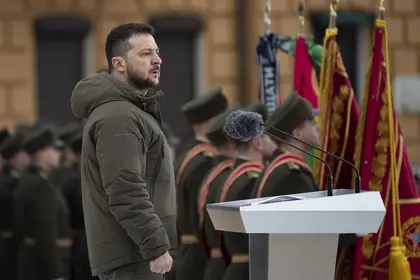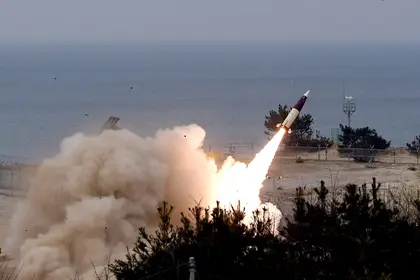You think you know until you realize you don’t know that much. After Russia launched its full-scale invasion of Ukraine on Feb. 24, 2022, many around the world felt anger, disbelief, and powerlessness. But as Ukrainian President Volodymyr Zelensky became a national hero and a universal symbol of resistance, something few human rights advocates expected to happen happened: we learned more tricks of the trade.
Even seasoned advocates working in multilateral spaces like the UN Human Rights Council took notes as they watched Zelensky fight for the survival of his country as an independent state.
JOIN US ON TELEGRAM
Follow our coverage of the war on the @Kyivpost_official.
One year on, Ukraine is still resisting. Not because of hagiographies of its President – they won’t give Ukraine the decisive support it needs to defeat Russia – but because the advocacy he’s been doing helps his country achieve its strategic objectives and war aims.
Ticking all the right boxes
As a human rights advocate, I often give trainings. I begin with a discussion of what advocacy is (spoiler: it’s the activity that seeks to influence decision-making) and provide trainees with tools. With group exercises, they put these tools into practice. My trainings usually end with a recap of advocacy tips to engage with the UN.
What I do with three-hour PowerPoint presentations, Zelensky does it with three-minute videos. His experience as a comedian surely helps him tick all the boxes of advocacy. Eye contact, speech cadences and sonorities, and body language are essential to persuasion. But beyond this, Zelensky successfully deploys the advocacy toolkit:

Zelensky to Address UN Security Council on Sept. 24
1. Identify the problem: What needs to be addressed? (Russia’s crimes and impunity.)
2. Set long-term goals and shorter-term objectives, as well as strategies and tactics to achieve these goals and objectives. (Ukraine’s liberation and recovery of its 1991 borders through military means – for the time being, talks aren’t on the table.)
3. Frame events the way you want them to be framed. Be consistent and steadfast. (It’s a war of resistance against an aggressor, and nothing can justify this aggression.)
4. Know your audience and what their “triggers” are. Understand their interests and constraints: What can they do for you? How can you push them to be more ambitious? (Since February 2022, Ukraine pushed NATO’s “red lines” further and further away as Zelensky persuaded allies that Ukraine needs more weapons, more equipment, and more support. The build-up has led from Javelins to Caesars and HIMARS to Patriots, and now to Leopards.)
5. Formulate action-oriented asks, based on facts. Good advocacy is evidence-based. (Zelensky’s weapons requests are specific in both qualitative and quantitative terms: he always explains why Ukraine needs these weapons.)
6. Prepare arguments for each interlocutor. (While his frame remains the same, Zelensky fine-tunes his talking points depending on who he’s talking to. He doesn’t say the same things to Western allies, NATO members, African states, or business enterprises.)
7. Anticipate. Be ready not just for current but for future opportunities and needs. (Zelensky thinks long-term. He systematically outlines possible developments on the battlefield.)
8. Think about second-best and third-best options. If Plan A doesn’t work, be prepared to put Plan B on the table. If Plan B doesn’t work, be prepared to put forward Plan C. Set the bar high and be ready to lower it. (Allies are reluctant to supply F-16s? The bottom line is Ukraine needs modern equipment.)
9. Address your weakest point head-on. (In response to NATO’s hesitations to provide Ukraine with longer range missiles, Zelensky came with a reassurance: a commitment not to use these missiles to attack Russian territory.)
Above all, Zelensky continues to build support for his country. From day one, he’s applied advocacy fundamentals: mobilize your camp, find allies, build coalitions (or at least ensure that “neutral” actors don’t work against you), make yourself indispensable and be the one everyone wants to be with.
Carrying a vision
These tools and tips help build strong advocacy. In themselves, however, they cannot guarantee success. To be fully effective, you need a vision and priorities.
Zelensky has managed to do this. He’s given people a sense of purpose. Remember the war’s early days. Unqualified EU solidarity wasn’t a given. Partners feared that Kyiv would fall within three days. Zelensky turned the 27 EU members around completely: first on military support, then on Ukraine’s EU candidacy. He rallied them to his people’s cause with a simple argument: This war is about defending democracy against authoritarianism. If Ukraine falls, you’re next. To Ukraine’s fate, he’s tied the fate of the European continent and of liberal democracy.
To achieve this, he’s used more advocacy staples:
1. Outline the change you want to see: an end to Russia’s aggression and an independent Ukraine restored in its 1991 borders, and peace and security in Europe.
2. Deliver clear messages. He tries to connect with people’s core beliefs, raising the issue of democracy with Europeans, sovereignty and food security with Africans, and stability with economic actors.
3. Avoid jargon, politicianese, or legalese. He uses plain, concrete language that elicits emotions and empathy. He talks about people being killed, buildings being bombed, and lives being broken. He talks about atrocities. He refuses to hide the truth or use understatements.
4. Rely on a sense of style and rhetoric – for instance, to call for supplies of fighter jets, he’s coined the expression “wings for freedom.” He’s also ensured broad publicity for the slogan “Slava Ukraini” (Glory to Ukraine) and made himself instantly recognizable, typically appearing unshaven in olive drab military fatigues.
5. Use striking images – including videos from downtown Kyiv, as Russian troops were approaching; from Bucha, where he called for justice; from Kherson, only three days after the city’s liberation; or from Bakhmut, on the eastern frontline.
But there’s more. Zelenskyy has consistently been careful not to feed narratives that could be used against his camp, such as those coming from colonial powers of the past. When he talks to formerly colonized countries, he shows that today, Russia is the one conducting a colonial war of aggression and behaving as an imperial power.
In multilateral fora, this has contributed to isolating Russia. At the UN Human Rights Council, a majority of African members (8 out of 13) voted to establish a commission of inquiry on Russia’s aggression against Ukraine – a surprisingly good result for Ukraine given African states’ lukewarm position hitherto (before February 2022, most abstained on resolutions addressing the occupied Donbas and Crimea). At the UN General Assembly, states overwhelmingly demanded that Russia end its military operations, and only 24 states opposed suspending Russia from the Human Rights Council. Again, for the first anniversary of Russia’s invasion, the international community’s support to Ukraine was massive.
Last, Zelensky continually works on his legitimacy. His support base (the Ukrainian people) remains strong, but so do their values; in Russian-occupied territories, Ukraine doesn’t target civilians or civilian infrastructure. It acknowledges collateral damage. It doesn’t execute prisoners of war. When allegations of torture are made against its soldiers, Ukraine pledges to investigate instead of brushing the issue away. (The only thing Ukraine hasn’t been fully transparent about is the number of its own military casualties.) This stands in stark contrast to Russia’s behavior.
In short: Zelensky leads by example. When Russia launched its offensive on Kyiv, he rejected offers of safe-conduct. He stayed in his capital knowing that if captured, he would be killed. This physical courage is admirable – but imagine the message leaving his country would have sent to the Ukrainian people and allies. His vision plays a key role in continuing to mobilize public opinion in liberal democracies and beyond.
There’s only so much you can do
Advocacy, however brilliant, cannot achieve everything. Sometimes, the constraints you face are just too significant.
It’s unrealistic to see states like China, South Africa, or Brazil align with Kyiv’s positions – this would mean opposing Moscow head-on. Despite Zelensky’s best efforts, including a speech before the African Union, many states have found refuge in nonalignment. Ukraine’s diplomatic success in getting many states to condemn the abuses stemming from Russian’s aggression hasn’t translated into a tremendous success in getting states to condemn human rights abuses within Russia. Many Global South countries support Ukraine’s sovereignty and territorial integrity, but prefer to abstain regarding Russia’s domestic human rights situation.
And of course, it’s been impossible to break the deadlock at the UN Security Council (including, but not only, because of Russia’s status as permanent member with veto powers).
To be fair, on some occasions, Zelensky also disregarded advocacy basics. If you set the bar too high or take allies down a path they cannot take, it can’t work. When a missile landed in eastern Poland, Zelensky claimed that Russia had targeted NATO territory. It appeared that it wasn’t the case, and everyone pushed back. Neither Russia nor NATO wanted a direct confrontation triggered by Article 5. You can push red lines (which retrospectively appear not to have been red lines), but there are lines your allies won’t cross; NATO countries won’t send troops into Ukraine.
Regardless, for Zelensky and the Ukrainian people, effectively using advocacy tools will be key to mobilizing continued support. As the UN Human Rights Council opens its 52nd session and prepares to renew the mandate of its commission of inquiry, the message remains that only one thing is worse than war: slavery.
Nicolas Agostini is a human rights advocate and researcher, currently working between Geneva and East Africa. He has over ten years of experience with human rights organizations at the national, regional, and international levels.
The views expressed in this opinion article are the author’s and not necessarily those of Kyiv Post.
You can also highlight the text and press Ctrl + Enter






